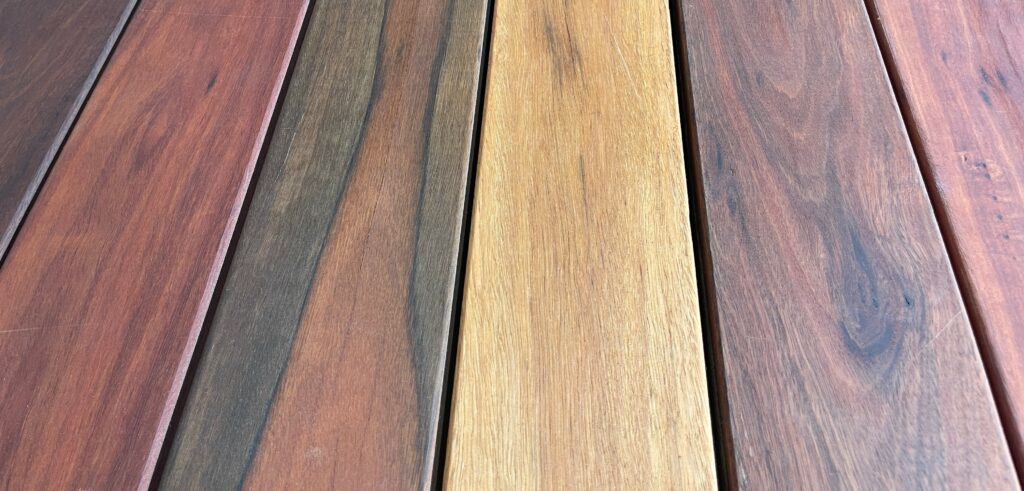
Know Your Timber: Ironbark
Ironbark timber – also known as ‘iron bark’ timber – is a stylish and durable hardwood that is perfect for your timber flooring or timber decking project. Using iron bark timber in your next project will be sure to level up your home.
Where does ironbark timber originate?
Ironbark, also called ‘grey ironbark’, comes from the Eucalyptus paniculata tree.
Ironbark is native to New South Wales in coastal areas with high rainfall, mainly from Bulahdelah to Bermagui. Ironbark trees usually grow 20-30 metres tall but has been known to grow as tall as 56 metres with a diameter of 1.96 metres.
The ironbark tree is named for the fact that its bark looks like iron slag. The bark is resistant to fire and heat and protects the living tissue within the trunk and branches from fire.
What is the colour of ironbark timber?
Its colours can vary considerably, anywhere from dark red to dark brown to pale brown, though most of our ironbark timber tends to be red.
Is ironbark timber susceptible to pests?
Ironbark sapwood is not susceptible to lyctid borers, while the heartwood is class 3 resistant.
It is resistant to termites above ground and the durability rating of 1 applies both above and below the ground.
Is ironbark timber durable?
Ironbark timber has a durability rating of 1, which is the highest timber durability rating. Class 1 means that timber is projected to last for 50+ years in a fully protected area and 50+ years outside above the ground. Class 1 timber lasts for 25+ years if it is in the ground, such as a deck post.
Learn more about timber durability ratings.
Iron bark timber is not only hard and durable, but it is very heavy. This makes it perfect for structural use.
What are the best uses for ironbark timber
Due to its weight and density, it is not used for a lot of smaller, precision work, but it is great for big jobs. Ironbark timber is used primarily for timber decking, timber flooring, timber handrails and outdoor timber framing around the home.
Industrial applications include shipbuilding, construction, railway sleepers, piles and poles.
Is ironbark timber easy to work?
We mentioned density and weight earlier. Ironbark is difficult to work with but provides great results. If you are trying to complete a deck in one weekend, we would recommend using merbau timber (also known as ‘Kwila’).
Iron bark timber is difficult to nail and to plane, and the fact that it is so heavy makes it a lot harder to hold in place while nailing.
What is the biggest upside of iron bark timber?
The upside to Ironbark is that it is stylish and durable; your deck or flooring will seemingly last forever. The grain is interlocked, and the texture can be coarse but even. Ironbark timber makes very solid flooring and with a gloss finish the coarse texture will look a million dollars.
Are you planning on using ironbark timber to build a deck? Discover our decking FAQs where we answer all your burning questions. We even have a decking calculator to make your job easier.
Ready to place an order? Send us an enquiry to let us know or place your order online now.